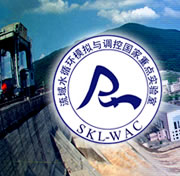《Journal of Geotechnical and Geoenvironmental Engineering 》杂志刊登“钢筋土墙上的竖直面荷载”
作者:I. P. Damians; R. J. Bathurst; A. Josa; A. Lloret; and P. J. R. Albuquerque
刊物:《Journal of Geotechnical and Geoenvironmental Engineering》,139卷第9期,1419-1432页
关键词:挡土墙;钢筋;竖直荷载;面板;承载衬垫;有限单元模型
摘要:本文研究了施工的后期回填土、地基土和水平缝竖直压缩性对钢筋混凝土挡土墙内竖直荷载大小的影响。通过施工现场测量仪器记录的整理得出了竖直趾荷载可以比面板的自重还大。在最不利的例子中,这些荷载可能还会导致墙前产生由面板与面板接触引起的混凝土开裂。超过面板自重的竖直荷载归因于回填土和面板之间的相对位移引起的面板和钢筋单元之间连接处的面板-土体接触面剪切和下拉荷载。由于回填土和面板之间的相对位移会引起面板和钢筋单元之间连接处面板—土体接触的剪切和下拉荷载,所以可能产生超过面板自重的竖直荷载。最后使用二维有限元模型系统的研究了回填土、地基土、承压衬垫的刚度和面板-土体接触面对面板竖直荷载的影响。结果表明,选用合适数量和类型的可压承载衬垫可以有效减小结构上的竖直压力荷载,同时,可以确保混凝土面板之间有一个可接受的竖直间隙。本研究参数限制为墙的高度为16.7m,嵌固深度为1.5m,其与一个记录齐全的现场例子相匹配。然而,本文中记录的观察结果对其他相似的结构同样适用。工程师可以使用现有的商业有限单元模型程序包和简单的本构模型对相似的钢筋土墙的承载衬垫进行优化设计。
Vertical-Facing Loads in Steel-Reinforced Soil Walls
Author: I. P. Damians; R. J. Bathurst; A. Josa; A. Lloret; and P. J. R. Albuquerque
Journal: <Journal of Geotechnical and Geoenvironmental Engineering > Volume 139, Issues 9, 1419-1432
Key words: Soil retaining walls; Steel reinforcement; Vertical loads; Facing panels; Bearing pads; Finite-element modeling.
Abstract: The paper investigates the influence of backfill soil, foundation soil, and horizontal joint vertical compressibility on the magnitude of vertical loads developed in steel-reinforced soil concrete panel retaining walls at the end of construction. Measurements of toe loads recorded from instrumented field walls are reviewed and demonstrate that vertical toe loads can be much larger than the self-weight of the facing. In extreme cases, these loads can result in panel-to-panel contact leading to concrete spelling at the front of the wall. Vertical loads in excess of panel self-weight have been ascribed to relative movement between the backfill soil and the panels that can develop panel-soil interface shear and down drag loads at the connections between the panels and the steel-reinforcement elements. A two-dimensional finite-element model is developed to systematically investigate the influence of backfill soil, foundation soil, bearing pad stiffness, and panel-soil interaction on vertical loads in the panel facing. The results show that an appropriately selected number and type of compressible bearing pads can be effective in reducing vertical compression loads in these structures and at the same time ensure an acceptable vertical gap between concrete panels. The parametric analyses have been restricted to a single wall height (16.7 m) and embedment depth of 1.5 m, matching a well-documented field case. However, the observations reported in the paper are applicable to other similar structures. The general numerical approach can be used by engineers to optimize the design of the bearing pads for similar steel-reinforced soil wall structures using available commercial finite-element model packages together with simple constitutive models.
原文链接:http://ascelibrary.org/doi/abs/10.1061/%28ASCE%29GT.1943-5606.0000874
翻译:王丽娟 审核:安鹏

